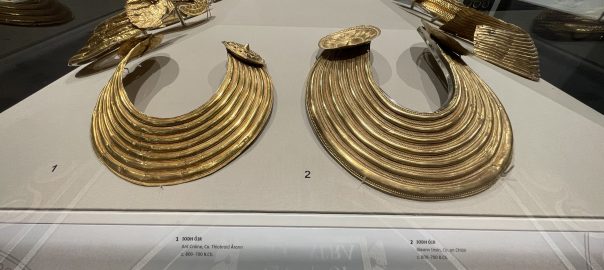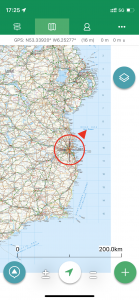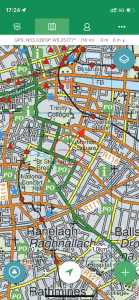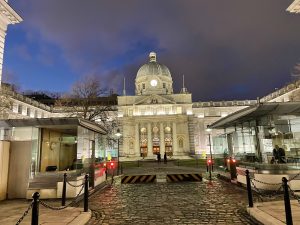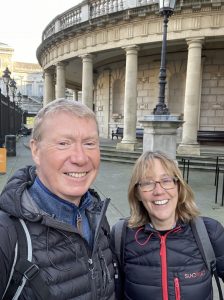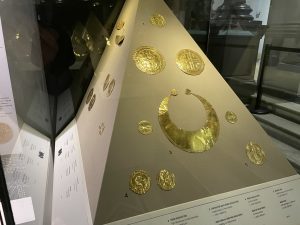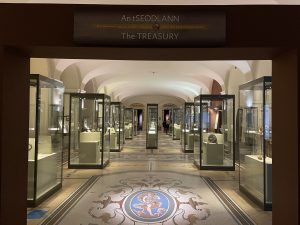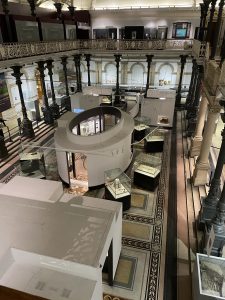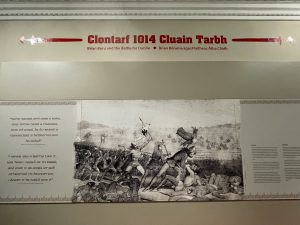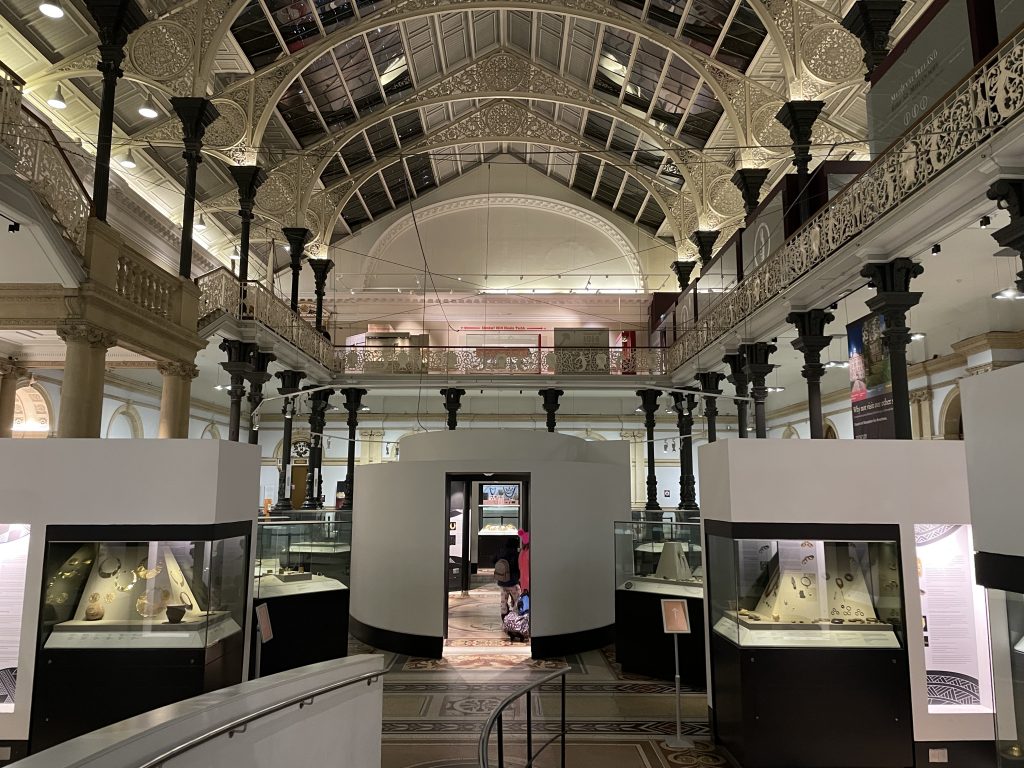Ireland day 0108. Friday 14 January 2022- Archaeology
Commentary
You know – I thought I was sort of beginning to get a grip on Irish history, after having explored prehistory at Newgrange, the Battle of the Boyne at Oldbridge, and the 1916 uprising at the post office. But I’ve been steadily realising that no matter how far you go, there’s always more to it than meets the eye. That became all too apparent when we visited the National Museum of Ireland – Archaeology this afternoon.
The museum itself is beautifully laid out, and – like so many places in Dublin at the moment – was blissfully quiet. Only a couple of earnest visitors apart from us, and plenty of helpful staff to answer questions if there was something you didn’t understand. There was lots to learn and one of the first things we found out was that whereas in mainland Britain, there is reasonably clear evidence of humanoid settlement as far back as 700,000 years ago, in Ireland the human historic record starts much more recently. There are some stone tools from around 400,000 years ago, coming from diverse locations like Meath, Cork and Galway – but their origins are apocryphal. There is actually reasonably compelling evidence to suggest that they may have been transported here on the numerous ice sheets that have covered the British Isles in the last half million years. I don’t know what the explanation for the absence of palaeolithic human settlement is – perhaps Ireland was too difficult to get to when the whole area was glaciated, and when it wasn’t, maybe the Irish Sea got in the way.
I was also very impressed by the extensive collection of goldwork which was beautifully displayed in the “Treasury” section of the museum. The intricacy of the goldsmithing on some of the artefacts – which were as much as 4,500 years old – was astonishing. More hordes of gold have been recovered in Ireland than any in other European country. The majority of the artefacts – like many of the exhibits in the museum, in fact, had been recovered from the extensive bogs which cover Ireland. And you might well be wondering where all the gold came from. Well, actually, gold resources are fairly well distributed across Ireland. Prehistoric man never actually mined gold (though there are currently plans to build a new gold mine in Co Monaghan, near the border with northern Ireland). Rather, “placer” gold was recovered – usually by panning – from river-beds. It was – and still is – particularly abundant in Co Wicklow and Co Waterford, to the south of Dublin. Nuggets as heavy as 700g (worth about €35,000) have been found in relatively recent times.
But for me I think the most interesting part of the museum was the display on the Battle of Clontarf. This conflict happened in the year 1014 at Clontarf – today it’s a suburb of Dublin, and literally only just down the road from us here in Malahide. Trying to piece together what exactly happened over a thousand years ago is hard, but to many the battle is highly symbolic and still relevant in an understanding of modern day Irish politics (believe it or not).
Part of the appeal of this admittedly violent and bloody engagement (think “Game of Thrones” on steroids) lies in the names of the chief antagonists. One the one side we had Brian Ború – a violent and efficient warmonger who had successfully conquered most of Ireland and had proclaimed himself the High King of Ireland. And on the other side we had Sitric Silkenbeard (yes, really) who was the overlord of the Viking town of Dublin. Brian coveted Dublin for its riches and access to the sea – and didn’t much like the idea of another powerful leader challenging his Irish hegemony. After much to-ing and fro-ing, battle was engaged on Good Friday 1014. There were massive armies on both sides. Sitric had gathered together a Viking army with recruits from the Isle of Man, Orkney and possibly also Iceland. Brian had also pulled together a substantial force from his various Irish conquests. So a brutal and unsophisticated battle ensued, lasting from dawn to dusk, and leaving 10,000 dead in its wake.
The upshots of the battle were manifold. Firstly, Brian, one of his sons and grandson were all killed. Sitric survived, but many of his leaders lay dead. But most significantly, although Brian was dead, his forces “drove the Vikings into the sea and slaughtered those that remained”, thus enabling his forces to take Dublin and end 300 years of Viking pillage.
But like so many Irish infractions, the victory was pyrrhic. Not just because Brian lay dead, but also because his remaining sons couldn’t agree among themselves who should ascend to the throne. So Ireland once again disintegrated and the brief period when Ireland was united under a single leader was gone. Even now, a thousand years later, it still hasn’t fully returned. So for this reason, Brian Ború has become a bit of a nationalist hero – not just for ridding Ireland of the Vikings, but also for the brief period of unity he brought to the island. Well – so the story goes, anyway. What really happened all those years ago will probably never be known in truth, but the historical records do suggest that large parts of it are right.
Well that’s more than enough for today. Thank you for bearing with the blog right to the end. For the next few days, we are planning less mind-stretching excursions, so your grey cells are safe for now, at least.
Today’s photos (click to enlarge)
